Hypothyroidism
Hypothyroidism is the most common endocrine disease in the dog. Clinical signs relate to reduced metabolism and may include lethargy, weight gain, warmth-seeking, dermatologic disease (hyperpigmentation, alopecia, seborrhea), edema, weakness, central nervous system dysfunction, and reproductive dysfunction. A mild to moderate nonregenerative anemia is present in up to 50% of affected dogs. The anemia is likely multifactorial and is rapidly corrected with thyroid hormone supplementation. Possible mechanisms include: decreased plasma erythropoietin concentration, decreased responsiveness of erythroid precursors to erythropoietin, lack of thyroid hormone stimulation of hemopoietic stem cells, decreased oxygen consumption in tissues, and impaired intestinal iron absorption. About 75% of dogs have fasting hypercholesterolemia and may also have hypertriglyceridemia. The deranged lipid metabolism can result in cholesterol loading of red cell membranes and the presence of increased leptocytes on peripheral blood smears. Changes in hepatic and muscle enzymes are variable and inconsistent.
Hypothyroidism in the dog is usually primary, that is, due to pathology of the thyroid gland, such as lymphocytic thyroiditis or thyroid atrophy. Therefore, in addition to low total T4 and low free T4, endogenous TSH concentration is expected to be increased. A low total T4 in a dog with clinical and laboratory findings that are highly suggestive of hypothyroidism and with no evidence of nonthyroidal illness supports a diagnosis of hypothyroidism (Fig. 10.2). If the total T4 is well within the RI, hypothyroidism is unlikely. Diagnosis of hypothyroidism may be more difficult if discordant results are obtained, for example, low T4 with normal endogenous TSH may be present in up to 40% of hypothyroid dogs, and some clinically suspicious cases may have normal T4 and high endogenous TSH. These animals should be monitored and retested at a later date, particularly if clinical suspicion of hypothyroidism persists or increases.
As in clinically ill cats, thyroid testing in an ill dog is of questionable value since both total T4 and free T4 are usually low, a condition called “euthyroid sick syndrome”. Testing at a later time, following recovery, is recommended to rule out concurrent hypothyroidism.
Occasionally dogs with hypothyroidism have very high total T4 concentrations, due to interference of antithyroid hormone autoantibodies with the assay. Autoantibody concentrations should be measured under these circumstances. Assays are available to evaluate the presence of thyroglobulin autoantibody, thyroxine autoantibody, and triiodothyronine autoantibody.
Secondary hypothyroidism is uncommon and is due to TSH lack from pituitary pathology, usually a pituitary tumor in adult dogs. In addition to hypothyroidism, other types of endocrinopathies may be present and clinical signs often relate more to these conditions and local compression from the pituitary tumor, than to hypothyroidism. Also, certain hormones or drugs can potentially suppress pituitary thyrotropic cells, resulting in impaired TSH release and secondary hypothyroidism. One would expect to find low total T4, low free T4, and low-normal TSH concentrations. However, the lower limit for endogenous TSH is 0 ng/mL in most laboratories, therefore, low concentrations cannot be distinguished from normal reference concentrations. Tertiary hypothyroidism is due to lack of thyroid releasing hormone from the hypothalamus and has not been reported in dogs.
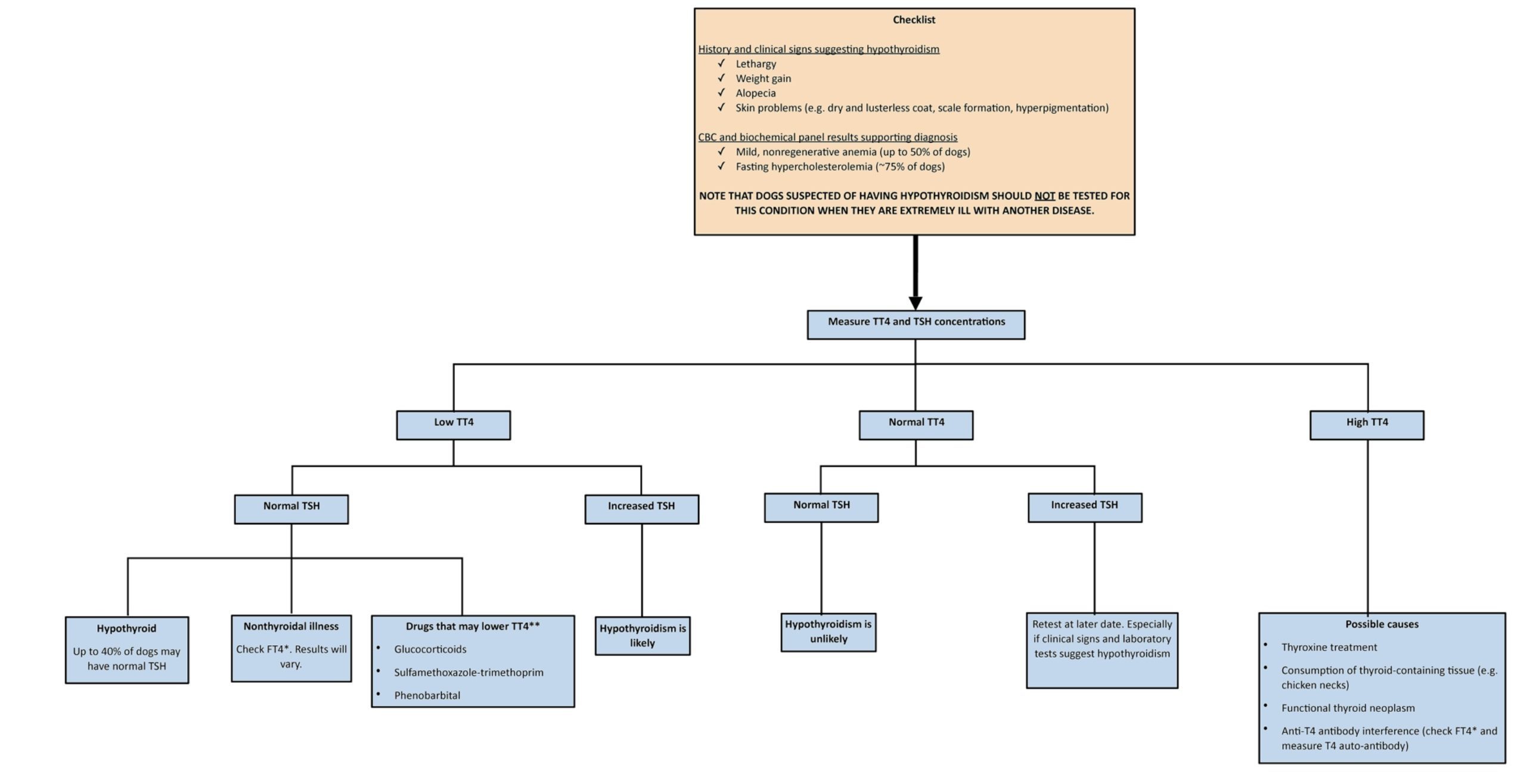
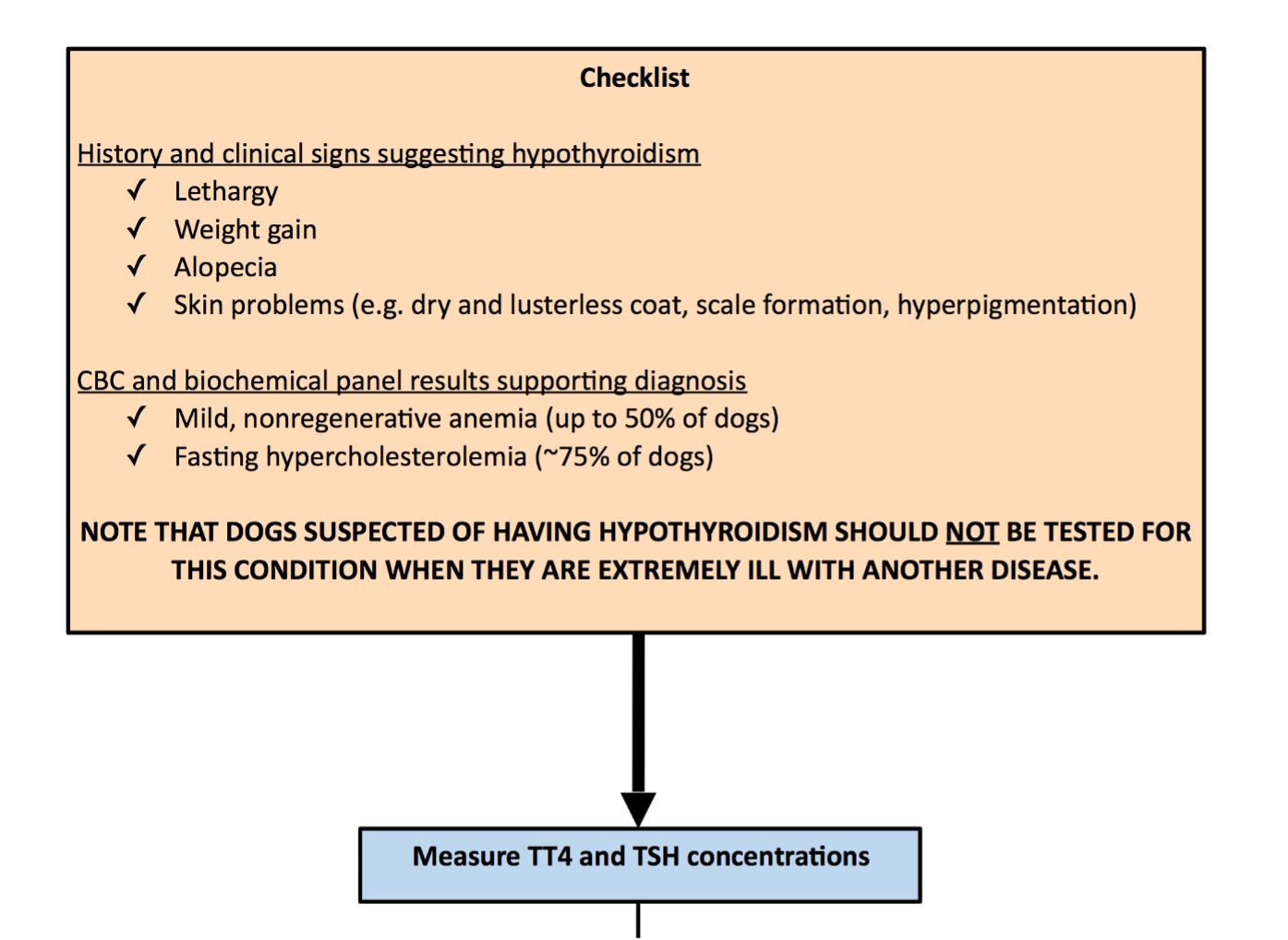
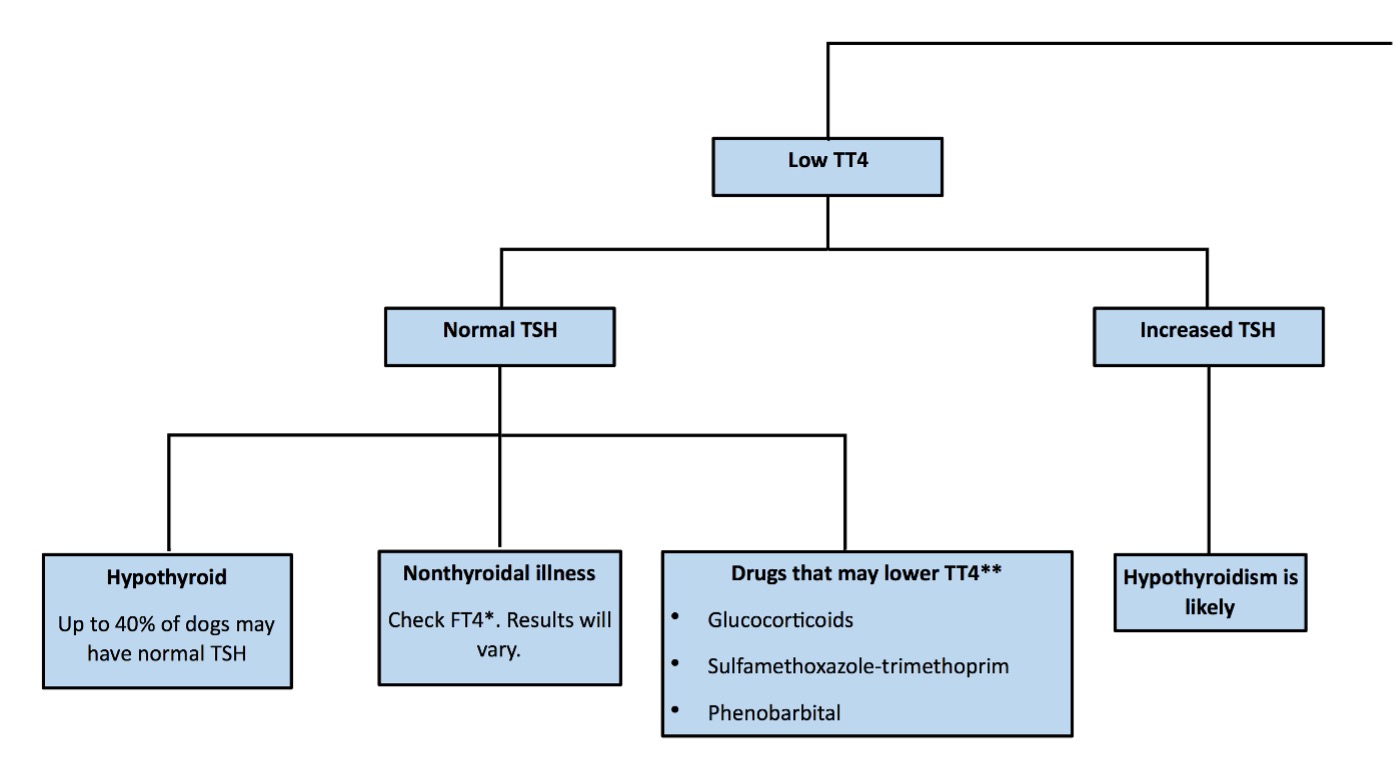
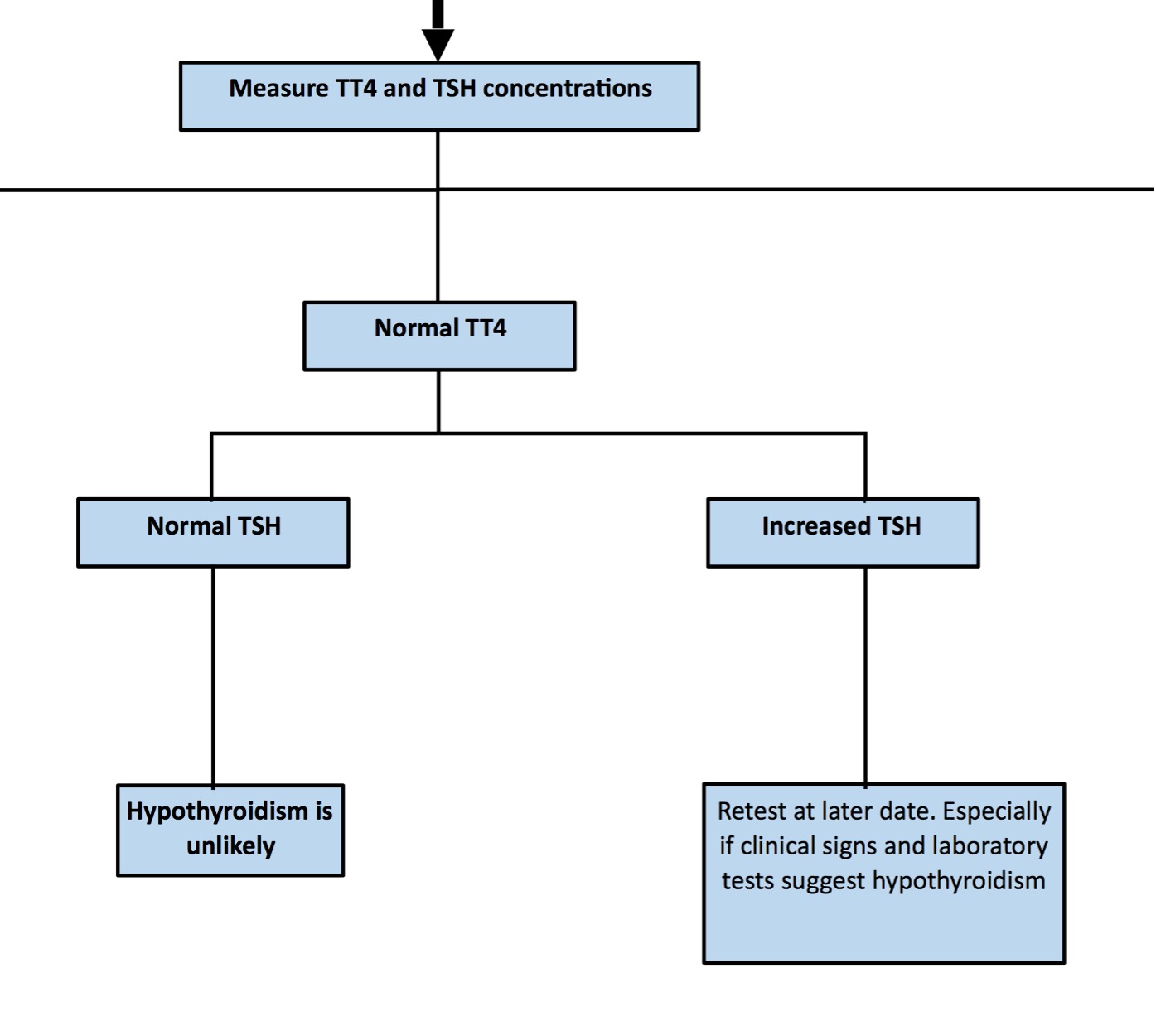
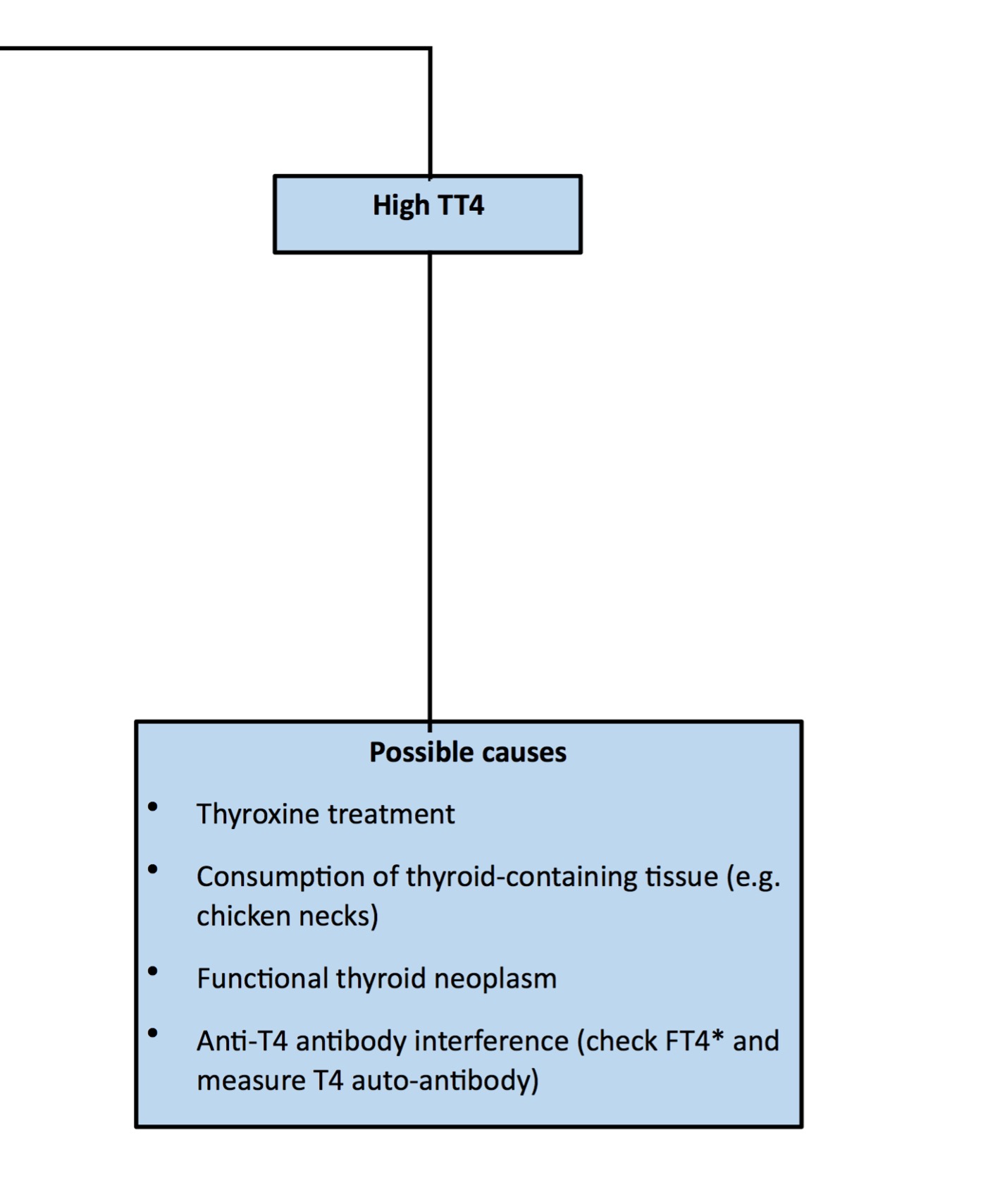
Naturally occurring primary hypothyroidism is rare in cats; however, acquired hypothyroidism occurs following treatment for hyperthyroidism. Low total T4 concentrations are commonly seen in ill cats and represent “euthyroid sick syndrome”.
Congenital hypothyroidism has been documented in various species, but especially in neonatal foals. Affected foals have hyperplastic thyroid glands, mandibular prognathism, and musculoskeletal deformities of the limbs. Gestational dietary factors in the mares may be responsible for the syndrome.
Decrease in hematocrit (PCV) recognized on the complete blood count (CBC); usually hemoglobin concentration and RBC numbers are also decreased.
Pluripotential cell that gives rise to all hemopoietic cell lines; also capable of self-renewal.
General term for fat, including triglycerides, phospholipids, cholesterol.
Lipid used to form cell membranes, steroid hormones, bile acids, and vitamin D.
Low T4 that is not due to primary thyroid disease in an ill animal.

